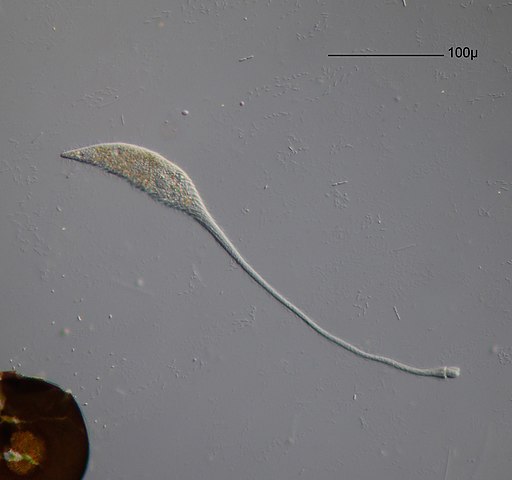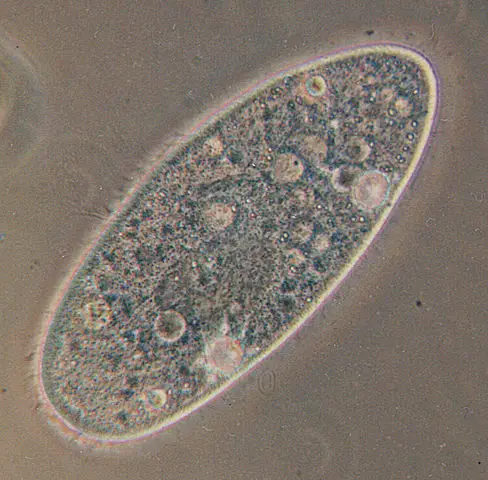Intramacronucleata
** Definition, Classification and Characteristics
Overview
Along with Postciliodesmatophora, Intramacronucleata is a subphylum of the phylum Ciliophora. With a total of nine (9) classes, this subphylum is characterized by significant diversity in their somatic kinetid structure and molecular phylogenies.
Given that this subphylum consists of several classes, its species exhibit varying characteristics with regards to shape, feeding, and morphology, etc.
Classes belong to the subphylum Intramacrpnudeata includes:
- Class Spirotrichea
- Class Armophorea
- Class Litostomatea
- Class Phyllopharyngea
- Class Nassophorea
- Class Colpodea
- Class Prostomatea
- Class Oligohymenophorea
- Class Plagiophylea
Classification of Subphylum Intramacronucleata
- Phylum: Ciliophora - Protozoa characterized by the presence of cilia
- Subphylum: Intramacronucleata
- Classes (stated above)
Intramacronucleata Characteristics
While members of subphylum Intramacronucleata have a number of varying characteristics, they also share several characteristics that allow them to be placed in the same group. In addition to a well developed cortical alveolar system, fission is, for the most part, isotopic.
One of the other major characteristics among these organisms entails the manner in which the nucleus (macronucleus) is divided during binary fission. Here, microtubules (intramac-ronuclearmicrotubules) located within the macronuclear membrane serve to divide the macronucleus during cell division into equal macronuclei for each of the newly formed daughter cells.
With regards to such characteristics as size, shape as well as morphological structures (such as the oral structures etc); members of this subphylum vary significantly from one group to another. For instance, whereas some of the species are capable of swimming freely in their environment, others are sessile and thus incapable of locomotion.
Some of the organisms exist as parasitic while others live in harmony with their hosts (obligate symbionts). Therefore, in order to get a better understanding of the subphylum, it's important to look at the classes.
Class Spirotrichea
Members of class Spirotrichea (known as Spirotrichs) can be found in different environments ranging from oceans to soil. Some of the most common genera belonging to this class include Stylonychia, Euplotes, and Oxytricha.
Although they have cilia, like many other ciliates, their cilia combine to form cirri that are used for moving along the surface of a substrate. As plankton, some of the organisms in this group feed on such organisms as bacteria and phytoplankton in their environment, but also serve as prey for zooplankton.
As compared to other species in the group, some of the species (e.g. tintinnids) exhibit unique characteristics (e.g. the presence of a shell) that make it easy to identify them.
Some of the other characteristics of class Spirotrichea include:
- Have a relatively large body
- Adoral zone is located at the anterior part of the body
- Cell body may be oval or elongated
- Have a macronucleus that may exhibit chromosome-like structures during cell division
Class Armophorea
Also described as a Riboclass, members of the class Armophorea exhibit varying morphological characteristics. For this reason, they cannot be identified based on shared morphological traits.
They are divided into two groups that include: one consisting of free-living ciliates normally found in environments with very low or no oxygen (e.g. Caeno-morpha) and the other consisting of ciliates that inhabit the intestinal tract of various vertebrates and invertebrates (e.g. Nyctotheroides).
Class Litostomatea
Like class Armophorea, class Litostomatea consists of free-living ciliates (those that inhabit aquatic environments) as well as those that reside in the intestinal tract of various animals. Balantidium, which causes disease in human beings, is also found in this class. With regards to morphology, organisms within this group range from small to relatively large with varying shapes.
The cilia (somatic ciliation) may either be holotrichous or sparse depending on the organism. While cilia are present among all the organisms, some of them have oral cilia (in addition to a ring of tentacles known as Toxicysts) used for feeding and movement while others lack these structures.
Class Phyllopharyngea
Members of class Phyllopharyngea are divided into free-living (swimming) forms (e.g. Trithigmostoma) and immotile forms (sessile) like chonotrichs. By forming a symbiotic relationship with crustaceans, some of these organisms benefit from various food material (including bacteria and other food particles) they find on the surface and mouthparts of these arthropods.
As the name suggests, parts of the organism (e.g. cytopharynx and the tentacles) contain phyllae and a supportive component. Using their tentacles, Phyllopharyngeans are well able to not only capture prey, but also suck their cytoplasm as a source of nutrition.
Class Nassophorea
Commonly found in freshwater and marine environments, members of class Nassophorea (known as Nassophoreans) are free-living organisms that feed on bacteria (filamentous cyanobacteria). They are characterized by curved cytopharynx supported by numerous microtubular bundles.
Through the movement action of tiny, cilia-like arms attached to the microtubules, the organism is able to hold and transport the prey into the cytoplasm for digestion.
Some of the other common characteristics associated with members of this class include:
- Cilia, which varies from one species to another, tend to be monokinetids
- Have oral membranelles
- Vestige is observed during cell division.
* Some members of this group have also been found living in the soil.
Class Colpodea
Members of this class are characterized by their ability to form cysts (protective capsules). Although species in this class have cilia, it's usually dormant within the cyst. The majority of species here are found in freshwater environments where they feed on bacteria and a number of other organisms (other ciliates and flagellates).
Some organisms have been identified in soil habitats. During food scarcity, one member of the group (Sorogena) has been shown to aggregate and form a cyst (sorocarp) that sits on a small stalk until it's blown away by the wind to a more favorable environment.
* Bursaria, one of the largest ciliates is also is found in class Nassophorea.
Class Prostomatea
Protomes are usually found in marine and freshwater environments where they exist as plankton. They are characterized by an oral region located at the anterior part of the body.
Some of the other characteristics of these organisms include:
- Have oral dikinetid post cilial ribbons that run from each other dikinetid
- Walls of the precytostomal cavity are supported by circular microtubules
- Specialized kineties (brosse) found in the oral ciliature help in prey detection
- Can survive by feeding on dead invertebrates (for this reason, they are also described as tissue-eating ciliates)
Class Oligohymenophorea
The class Oligohymenophorea is suggested to contain the highest number of species in the group. As a result, these organisms can be found in many environments that contain moisture. Apart from lakes and oceans, they can also be found in terrestrial environments with moisture as well as host springs.
The species are characterized by a paroral kinety located on the left side or right side of the oral cavity as well as three oral polykinetids that can identified on the left side. As free-living organisms, members of this class typically feed on bacteria and are therefore referred to as bacteriovorous. For this reason, they are also common in sewage treatments.
* A few members can be parasitic in nature and capable of causing disease.
Class Plagiophylea
Like class Armophorea, class Plagiopylea is also referred to as a riboclass. Ciliates in this class can be found in both marine and freshwater environments with low oxygen levels (or no oxygen). While most of the Plagiopyleans are free-living organisms, some form a symbiotic relationship with sea urchins (living in the intestines of these organisms).
Return from Intramacronucleata to MicroscopeMaster home
References
Denis H Lynn. (2006). Ciliophora.
Joong Ki Choi. (2015). Invertebrate Fauna of Korea.
Moselio Schaechter. (2012). Eukaryotic Microbes.
Links
Find out how to advertise on MicroscopeMaster!
![Scanning electron microscope view of Oxytricha trifallaxby Unknown author - [1], Public Domain, https://commons.wikimedia.org/w/index.php?curid=5684090 Scanning electron microscope view of Oxytricha trifallaxby Unknown author - [1], Public Domain, https://commons.wikimedia.org/w/index.php?curid=5684090](https://www.microscopemaster.com/images/640px-Oxytricha_trifallax.jpg)






